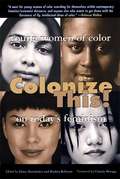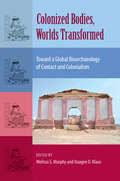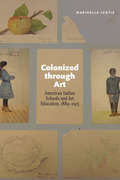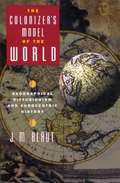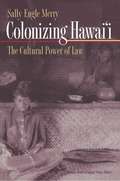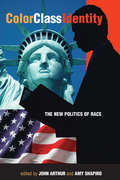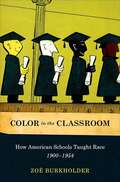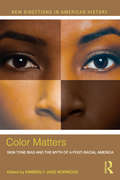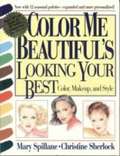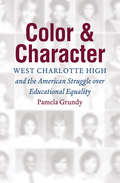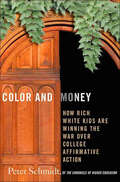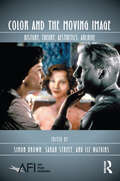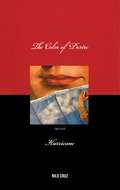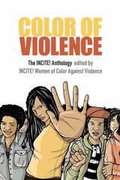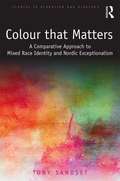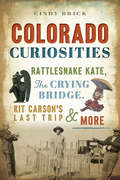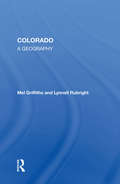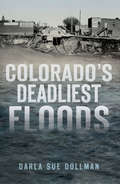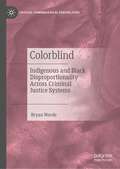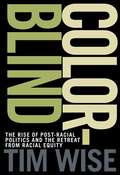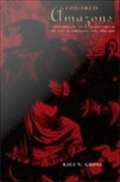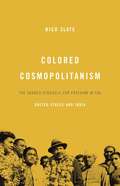- Table View
- List View
Colonization, Piracy, and Trade in Early Modern Europe: The Roles of Powerful Women and Queens (Queenship and Power)
by Estelle Paranque Nate Probasco Claire JowittThis collection brings together essays examining the international influence of queens, other female rulers, and their representatives from 1450 through 1700, an era of expanding colonial activity and sea trade. As Europe rose in prominence geopolitically, a number of important women--such as Queen Elizabeth I of England, Catherine de Medici, Caterina Cornaro of Cyprus, and Isabel Clara Eugenia of Austria--exerted influence over foreign affairs. Traditionally male-dominated spheres such as trade, colonization, warfare, and espionage were, sometimes for the first time, under the control of powerful women. This interdisciplinary volume examines how they navigated these activities, and how they are represented in literature. By highlighting the links between female power and foreign affairs, Colonization, Piracy, and Trade in Early Modern Europe contributes to a fuller understanding of early modern queenship.
Colonize This!: Young Women of Color on Today's Feminism
by Cherríe Moraga Daisy Hernández Bushra RehmanIt has been decades since women of color first turned feminism upside down, exposing the '70s feminist movement as exclusive, white, and unaware of the concerns and issues of women of color from around the globe. Now a new generation of brilliant, outspoken women of color is speaking to the concerns of a new feminism, and to their place in it. Daisy Hernandez of Ms. magazine and poet Bushra Rehman have collected a diverse, lively group of emerging writers who speak to their experience--to the strength and rigidity of community and religion, to borders and divisions, both internal and external--and address issues that take feminism into the twenty-first century. One writer describes herself as a "mixed brown girl, Sri-Lankan and New England mill-town white trash," and clearly delineates the organizing differences between whites and women of color: "We do not kick ass the way the white girls do, in meetings of NOW or riot grrl. For us, it's all about family. " A Korean-American woman struggles to create her own identity in a traditional community: "Yam-ja-neh means nice, sweet, compliant. I've heard it used many times by my parents' friends who don't know shit about me. " An Arab-American feminist deconstructs the "quaint vision" of Middle-Eastern women with which most Americans feel comfortable. This impressive array of first-person accounts adds a much-needed fresh dimension to the ongoing dialogue between race and gender, and gives voice to the women who are creating and shaping the feminism of the future.
Colonize This!: Young Women of Color on Today's Feminism (Live Girls)
by Daisy Hernandez Bushra RehmanNewly revised and updated, this landmark anthology offers gripping portraits of American life as seen through the eyes of young women of color <p><p> It has been decades since women of color first turned feminism upside down, exposing the feminist movement as exclusive, white, and unaware of the concerns and issues of women of color from around the globe. Since then, key social movements have risen, including Black Lives Matter, transgender rights, and the activism of young undocumented students. Social media has also changed how feminism reaches young women of color, generating connections in all corners of the country. And yet we remain a country divided by race and gender. <p> Now, a new generation of outspoken women of color offer a much-needed fresh dimension to the shape of feminism of the future. In Colonize This!, Daisy Hernandez and Bushra Rehman have collected a diverse, lively group of emerging writers who speak to the strength of community and the influence of color, to borders and divisions, and to the critical issues that need to be addressed to finally reach an era of racial freedom. <p> With prescient and intimate writing, Colonize This! will reach the hearts and minds of readers who care about the experience of being a woman of color, and about establishing a culture that fosters freedom and agency for women of all races.
Colonized Bodies, Worlds Transformed: Toward A Global Bioarchaeology of Contact and Colonialism (Bioarchaeological Interpretations of the Human Past: Local, Regional, and Global)
by Melissa S. Murphy and Haagen D. Klaus"Breaks new ground regarding how to think about colonial encounters in innovative ways that pay attention to a wide range of issues from health and demography to identity formations and adaptation."—Debra L. Martin, coeditor of The Bioarchaeology of Violence "Amply demonstrates the breadth and variability of the impact of colonialism."—Ken Nystrom, State University of New York at New Paltz European expansion into the New World fundamentally altered Indigenous populations. The collision between East and West led to the most recent human adaptive transition that spread around the world. Paradoxically, these are some of the least scientifically understood processes of the human past. Representing a new generation of contact and colonialism studies, this volume expands on the traditional focus on the health of conquered peoples by considering how extraordinary biological and cultural transformations were incorporated into the human body and reflected in behavior, identity, and adaptation.By examining changes in diet, mortuary practices, and diseases, these globally diverse case studies demonstrate that the effects of conquest reach further than was ever thought before—to both the colonized and the colonizers. People on all sides of colonial contact became entangled in cultural and biological transformations of social identities, foodways, social structures, and gene pools at points of contact and beyond. Contributors to this volume illustrate previously unknown and variable effects of colonialism by analyzing skeletal remains and burial patterns from never-before-studied regions in the Americas to the Middle East, Africa, and Europe. The result is the first step toward a new synthesis of archaeology and bioarchaeology.Contributors: Rosabella Alvarez-Calderón | Elliot H. Blair | Maria Fernanda Boza | Michele R. Buzon | Romina Casali | Mark N. Cohen | Danielle N. Cook | Marie Elaine Danforth | J. Lynn Funkhouser | Catherine Gaither | Pamela García Laborde| Ricardo A. Guichón | Rocio Guichón Fernández | Heather Guzik | Amanda R. Harvey | Barbara T. Hester | Dale L. Hutchinson | Kristina Killgrove | Haagen D. Klaus | Clark Spencer Larsen | Alan G. Morris | Melissa S. Murphy | Alejandra Ortiz | Megan A. Perry | Emily S. Renschler | Isabelle Ribot | Melisa A. Salerno | Matthew C. Sanger | Paul W. Sciulli | Stuart Tyson Smith | Christopher M. Stojanowski | David Hurst Thomas | Victor D. Thompson | Vera Tiesler | Jason Toohey | Lauren A. Winkler | Pilar Zabala
Colonized through Art: American Indian Schools and Art Education, 1889-1915
by Marinella LentisColonized through Art explores how the federal government used art education for American Indian children as an instrument for the “colonization of consciousness,” hoping to instill the values and ideals of Western society while simultaneously maintaining a political, social, economic, and racial hierarchy. Focusing on the Albuquerque Indian School in New Mexico, the Sherman Institute in Riverside, California, and the world’s fairs and local community exhibitions, Marinella Lentis examines how the U.S. government’s solution to the “Indian problem” at the end of the nineteenth century emphasized education and assimilation. Educational theories at the time viewed art as the foundation of morality and as a way to promote virtues and personal improvement. These theories made the subject of art a natural tool for policy makers and educators to use in achieving their assimilationist goals of turning student “savages” into civilized men and women. Despite such educational regimes for students, however, indigenous ideas about art oftentimes emerged “from below,” particularly from well-known art teachers such as Arizona Swayney and Angel DeCora.Colonized through Art explores how American Indian schools taught children to abandon their cultural heritage and produce artificially “native” crafts that were exhibited at local and international fairs. The purchase of these crafts by the general public turned students’ work into commodities and schools into factories.
Colonizer's Model of the World
by J. M. BlautThis book challenges one of the most pervasive and powerful beliefs of our time concerning world history and world geography. This is the doctrine of European diffusionism, the belief that the rise of Europe to modernity and world dominance is due to some unique European quality of race, environment, culture, mind, or spirit, and that progress for the rest of the world results from the diffusion of European civilization. J.M. Blaut persuasively argues that this doctrine is not grounded in the facts of history and geography, but in the ideology of colonialism. It is the world model which Europeans constructed to explain, justify, and assist their colonial expansion. The book first defines the Eurocentric diffusionist model of the world as one that invents a permanent world core, an "Inside," in which cultural evolution is natural and continuous, and a permanent periphery, and "Outside," in which cultural evolution is mainly an effect of the diffusion of ideas, commodities, settlers, and political control from the core. The ethnohistory of the doctrine is traced from its 16th-century origins, through its efflorescence in the period of classical colonialism, to its present form in theories of economic development, modernization, and new world order. Blaut demonstrates that most "Western" scholarship is to some extent diffusionist and based implicitly in the idea that the world has one permanent center from which culture-changing ideas tend to emanate. Eurocentric diffusionism has shaped our attitudes concerning race and the environment, psychology and society, technology and politics.
Colonizing Hawai'I: The Cultural Power of Law (Princeton Studies in Culture/Power/History #10)
by Sally Engle MerryHow does law transform family, sexuality, and community in the fractured social world characteristic of the colonizing process? The law was a cornerstone of the so-called civilizing process of nineteenth-century colonialism. It was simultaneously a means of transformation and a marker of the seductive idea of civilization. Sally Engle Merry reveals how, in Hawai'i, indigenous Hawaiian law was displaced by a transplanted Anglo-American law as global movements of capitalism, Christianity, and imperialism swept across the islands. The new law brought novel systems of courts, prisons, and conceptions of discipline and dramatically changed the marriage patterns, work lives, and sexual conduct of the indigenous people of Hawai'i.
Color - Class - Identity: The New Politics Of Race
by John ArthurThree recent and highly dramatic national events have shattered the complacency of many Americans about progress, however fitful, in race relations in America. The Clarence Thomas?Anita Hill hearings, the O.J. Simpson trial, and the Million Man March of Louis Farrakhan have forced everyone to reconsider their assumptions about race and racial relations.The Thomas-Hill hearings exposed the complexity and volatility of perceptions about race and gender. The sight of jubilant Blacks and despondent Whites reacting to the O.J. Simpson verdict shook our confidence in shared assumptions about equal protection under the law. The image of hundreds of thousands of Black men gathering in Washington in defense of their racial and cultural identity angered millions of Whites and exposed divisions within the Black community.These events were unfolding at a time when there seemed to be considerable progress in fighting racial discrimination. On the legal side, discrimination has been eliminated in more and more arenas, in theory if not always in practice. Economically, more and more blacks have moved into the middle class, albeit while larger numbers have slipped further back into poverty. Intellectually, figures like Cornel West, Henry Louis Gates Jr., and Patricia J. Williams are playing a central role as public intellectuals.In the face of these disparate trends, it is clear that Americans need to rethink their assumptions about race, racial relations, and inter-racial communication. Color * Class * Identity is the ideal tool to facilitate this process. It provides a richly textured selection of readings from Du Bois, Cornel West, Derrick Bell, and others, as well as a range of responses to the particular controversies that are now dividing us.Color * Class * Identity furthers these debates, showing that the racial question is far more complex than it used to be; it is no longer a simple matter of Black versus White and racial mistrust. A landmark anthology that will help advance understanding of the present unease, not just between Black and White, but within each community, this book will be useful in a broad range of courses on contemporary U.S. society.
Color In The Classroom: How American Schools Taught Race, 1900-1954
by Zoë BurkholderBetween the turn of the twentieth century and the Brown v. Board of Education decision in 1954, the way that American schools taught about "race" changed dramatically. This transformation was engineered by the nation's most prominent anthropologists, including Franz Boas, Ruth Benedict, and Margaret Mead, during World War II. Inspired by scientific racism in Nazi Germany, these activist scholars decided that the best way to fight racial prejudice was to teach what they saw as the truth about race in the institution that had the power to do the most good-American schools. Anthropologists created lesson plans, lectures, courses, and pamphlets designed to revise what they called "the 'race' concept" in American education. They believed that if teachers presented race in scientific and egalitarian terms, conveying human diversity as learned habits of culture rather than innate characteristics, American citizens would become less racist. Although nearly forgotten today, this educational reform movement represents an important component of early civil rights activism that emerged alongside the domestic and global tensions of wartime. Drawing on hundreds of first-hand accounts written by teachers nationwide, Zo? Burkholder traces the influence of this anthropological activism on the way that teachers understood, spoke, and taught about race. She explains how and why teachers readily understood certain theoretical concepts, such as the division of race into three main categories, while they struggled to make sense of more complex models of cultural diversity and structural inequality. As they translated theories into practice, teachers crafted an educational discourse on race that differed significantly from the definition of race produced by scientists at mid-century. Schoolteachers and their approach to race were put into the spotlight with the Brown v. Board of Education case, but the belief that racially integrated schools would eradicate racism in the next generation and eliminate the need for discussion of racial inequality long predated this. Discussions of race in the classroom were silenced during the early Cold War until a new generation of antiracist, "multicultural" educators emerged in the 1970s.
Color Matters: Skin Tone Bias and the Myth of a Postracial America (New Directions in American History)
by Kimberly Jade NorwoodIn the United States, as in many parts of the world, people are discriminated against based on the color of their skin. This type of skin tone bias, or colorism, is both related to and distinct from discrimination on the basis of race, with which it is often conflated. Preferential treatment of lighter skin tones over darker occurs within racial and ethnic groups as well as between them. While America has made progress in issues of race over the past decades, discrimination on the basis of color continues to be a constant and often unremarked part of life. In Color Matters, Kimberly Jade Norwood has collected the most up-to-date research on this insidious form of discrimination, including perspectives from the disciplines of history, law, sociology, and psychology. Anchored with historical chapters that show how the influence and legacy of slavery have shaped the treatment of skin color in American society, the contributors to this volume bring to light the ways in which colorism affects us all--influencing what we wear, who we see on television, and even which child we might pick to adopt. Sure to be an eye-opening collection for anyone curious about how race and color continue to affect society, Color Matters provides students of race in America with wide-ranging overview of a crucial topic.
Color Me Beautiful's Looking Your Best
by Mary Spillane Christine SherlockColor Me Beautiful's Looking Your Best is packed with the most up-to-date information and advice on color and image, guaranteed to help you make the most of yourself on every occasion. Find a palette of beautiful colors that will best compliment your individual coloring, making you look healthy and alive, not drab or old. Identify your basic figure shape so you can choose styles and accessories with confidence Learn how to select clothes that enhance your image and reflect your personality Discover the power of color and how it can help you achieve your goals. Note: while the text is excellent, some of the charts did not scan well.
Color and Character: West Charlotte High and the American Struggle over Educational Equality
by Pamela GrundyAt a time when race and inequality dominate national debates, the story of West Charlotte High School illuminates the possibilities and challenges of using racial and economic desegregation to foster educational equality. West Charlotte opened in 1938 as a segregated school that embodied the aspirations of the growing African American population of Charlotte, North Carolina. In the 1970s, when Charlotte began court-ordered busing, black and white families made West Charlotte the celebrated flagship of the most integrated major school system in the nation. But as the twentieth century neared its close and a new court order eliminated race-based busing, Charlotte schools resegregated along lines of class as well as race. West Charlotte became the city's poorest, lowest-performing high school—a striking reminder of the people and places that Charlotte's rapid growth had left behind. While dedicated teachers continue to educate children, the school's challenges underscore the painful consequences of resegregation.Drawing on nearly two decades of interviews with students, educators, and alumni, Pamela Grundy uses the history of a community's beloved school to tell a broader American story of education, community, democracy, and race—all while raising questions about present-day strategies for school reform.
Color and Money: How Rich White Kids Are Winning the War over College Affirmative Action
by Peter SchmidtWhat is the real story behind the fight over affirmative action at colleges? Veteran journalist Peter Schmidt exposes truths that will outrage readers and forever transform the debate. He reveals how:* colleges use affirmative action to mask how much they cater to the country club crowd and to solicit support from the big corporations they steer minority students toward;* conservatives have used opposition to affirmative action to advance a broader agenda that includes gutting government programs that help level the playing field;* selective colleges reward families for shielding their children from contact with other races and classes and help perpetuate societal discrimination by favoring applicants from expensive private schools or public schools in exclusive communities;* racial tensions like those witnessed at Duke University, the University of Michigan, and scores of other campuses in recent decades are a direct result of college admissions policies;* affirmative-action preferences for women and minorities may have survived recent court challenges, but in much of the nation they are unlikely to survive the forces of democracy; and* regardless of what happens with affirmative action, African Americans are going to be denied equal access to colleges for many decades to come unless American society undergoes revolutionary change.This is a startling, brave, and thoroughly researched book that will ignite a national debate on class and education for years to come.
Color and the Moving Image: History, Theory, Aesthetics, Archive (AFI Film Readers)
by Simon Brown Sarah Street Liz WatkinsThis new AFI Film Reader is the first comprehensive collection of original essays on the use of color in film. Contributors from diverse film studies backgrounds consider the importance of color throughout the history of the medium, assessing not only the theoretical implications of color on the screen, but also the ways in which developments in cinematographic technologies transformed the aesthetics of color and the nature of film archiving and restoration. Color and the Moving Image includes new writing on key directors whose work is already associated with color—such as Hitchcock, Jarman and Sirk—as well as others whose use of color has not yet been explored in such detail—including Eric Rohmer and the Coen Brothers. This volume is an excellent resource for a variety of film studies courses and the global film archiving community at large.
Color of Desire/Hurricane
by Nilo Cruz"The words of Nilo Cruz waft from the stage like a scented breeze. They sparkle and prickle and swirl, enveloping those who listen in both specific place and time . . . and in timeless passions that touch us all."--The Miami Herald One of the United States' most-produced Cuban American writers, Nilo Cruz employs his signature poetic imagery and vivid language to tender and humorous effect in this pair of his newest works. The Color of Desire, set in 1960 Havana, revolves around a passionate romance between an American businessman and an out-of-work Cuban actress. As the relationship becomes a metaphor for their countries' ruptured love affair, Cruz artfully weds magical realism to a familial story that is touching, harrowing, and funny. In Hurricane, a damaged family--a fire-and-brimstone missionary; his wife, who he saved in more than the spiritual sense; and their adopted son, who seems to have materialized from the ocean--face a shocking crisis when a hurricane ravages their Caribbean town. A celebration of humility, generosity, and kindness, Cruz's play explores the nature of identity, faith, and the redemptive power of love. Nilo Cruz is the author of the Pulitzer Prize-winning Anna in the Tropics, as well as A Park in Our House, A Bicycle Country, Dancing on Her Knees, Night Train to Bolina, Two Sisters and a Piano, and other works.
Color of Violence: The INCITE! Anthology
by INCITE! Women of Color Against ViolenceThe editors and contributors to Color of Violence ask: What would it take to end violence against women of color? Presenting the fierce and vital writing of organizers, lawyers, scholars, poets, and policy makers, Color of Violence radically repositions the antiviolence movement by putting women of color at its center. The contributors shift the focus from domestic violence and sexual assault and map innovative strategies of movement building and resistance used by women of color around the world. The volume's thirty pieces--which include poems, short essays, position papers, letters, and personal reflections--cover violence against women of color in its myriad forms, manifestations, and settings, while identifying the links between gender, militarism, reproductive and economic violence, prisons and policing, colonialism, and war. At a time of heightened state surveillance and repression of people of color, Color of Violence is an essential intervention. Contributors. Dena Al-Adeeb, Patricia Allard, Lina Baroudi, Communities Against Rape and Abuse (CARA), Critical Resistance, Sarah Deer, Eman Desouky, Ana Clarissa Rojas Durazo, Dana Erekat, Nirmala Erevelles, Sylvanna Falcón, Rosa Linda Fregoso, Emi Koyama, Elizabeth "Betita" Martínez, maina minahal, Nadine Naber, Stormy Ogden, Julia Chinyere Oparah, Beth Richie, Andrea J. Ritchie, Dorothy Roberts, Loretta J. Ross, s.r., Puneet Kaur Chawla Sahota, Renee Saucedo, Sista II Sista, Aishah Simmons, Andrea Smith, Neferti Tadiar, TransJustice, Haunani-Kay Trask, Traci C. West, Janelle White
Color that Matters: A Comparative Approach to Mixed Race Identity and Nordic Exceptionalism (Studies in Migration and Diaspora)
by Tony SandsetThis book examines the ways in which mixed ethnic identities in Scandinavia are formed along both cultural and embodied lines, arguing that while the official discourses in the region refer to a "post-racial" or "color blind" era, color still matters in the lives of people of mixed ethnic descent. Drawing on research from people of mixed ethnic backgrounds, the author offers insights into how color matters and is made to matter and into the ways in which terms such as "ethnic" and "ethnicity" remain very much indebted to their older, racialized grammar. Color that Matters moves beyond the conventional Anglo-American focus of scholarship in this field, showing that while similarities exist between the racial and ethnic discourses of the US and UK and those found in the Nordic region, Scandinavia, and Norway in particular, manifests important differences, in part owing to a tendency to view itself as exceptional or outside the colonial heritage of race and imperialism. Presenting both a contextualization of racial discourses since World War II based on documentary analysis and new interview material with people of mixed ethnic backgrounds, the book acts as a corrective to the blind spot within Scandinavian research on ethnic minorities, offering a new reading of race for the Nordic region that engages with the idea that color has been emptied of legitimate cultural content.
Colorado Curiosities: Rattlesnake Kate, The Crying Bridge, Kit Carson’s Last Trip & More
by Cindy BrickColorado's Front Range, Western Slope, eastern plains and southern approaches were home to some of the state's stranger people, places and events. Meet Mike the Headless Chicken from Fruita and a Fort Collins architect who designed a university building to house his wife--after he killed her. Learn about Florence's "The Alcatraz of the Rockies" or Doc Holliday's final breaths in Glenwood Springs. Dig into the odd conspiracy theories and underground city connected to the Denver International Airport. Walk alongside dinosaur tracks, scout out old mines and ancient petroglyphs or climb into Mesa Verde's shaded, mysterious cliff dwellings. Author Cindy Brick shares quirky, odd and intriguing episodes in Colorado history.
Colorado: A Geography
by Mel GriffithsColorado—seen as "the" place to ski, the ideal environment to live in, and a source of energy the country needs desperately—is best understood, write the authors of this descriptive and interpretive geography, as part of its regional setting. Water that flows from Colorado's snowfields supplies irrigation water for crops as far away as California. Tourists have a stake in Colorado's environment, as well as its economy. Colorado's vast energy and mineral resources cannot be developed without consideration of the impact on surrounding states. And many aspects of Colorado's future are dependent on influences that come from beyond the state's political boundaries. Colorado, incorporating the most recent (1980) census data and illustrated with more than 200 photographs, tables, and figures, is the only up-to-date geography of the state available. The authors look at Colorado first from the perspective of the physical setting it shares with its neighbors and then examine the interaction of people with the land. They also analyze Colorado's major industries—agriculture, tourism, mining, and manufacturing—and describe such Colorado phenomena as the way population tends to aggregate along the eastern slope of the mountains and how this population concentration has affected agriculture, water use, and industrial development. Numerous examples illustrate the practical workings of the complex interrelationships between Colorado's environment and its inhabitants. The book is designed to serve both as a text for courses in Colorado and Rocky Mountain geography, and as an authoritative source of information about the state for newcomers, as well as long-time residents.
Colorado’s Deadliest Floods (Disaster)
by Darla Sue DollmanRanked among the top ten states for both disasters and dry climate, Colorado has a long history of extreme weather. On May 19, 1864, residents of the fledgling gold rush town of Denver awoke to a wall of water slamming into the city with enough force to flatten buildings and rip clothing from its victims. The infamous Big Thompson Canyon flood of 1976 killed 144 residents, tourists and campers. Per the National Center for Atmospheric Research, Coloradoans experienced twenty-two floods with contemporary monetary losses of $2 million or more since the flood of 1864. And as the population continues to grow, the loss of lives, property, crops and livestock may increase. Local author Darla Sue Dollman, who witnessed and survived many of the contemporary disasters, examines the state’s most catastrophic flash floods from 1864 to 2013.
Colorblind
by Tim Wise"It's a great book. I highly, highly, highly recommend it." --Tavis SmileyIn this powerful follow-up to Between Barack and a Hard Place, Tim Wise argues against "colorblindness" and for a deeper color-consciousness in both public and private practice. We can only begin to move toward authentic social and economic equity through what Wise calls "illuminated individualism"-acknowledging the diverse identities that have shaped our perceptions, and the role that race continues to play in the maintenance of disparities between whites and people of color in the United States today. This is the first book to discuss the pitfalls of "colorblindness" in the Obama era.
Colorblind: Indigenous and Black Disproportionality Across Criminal Justice Systems (Critical Criminological Perspectives)
by Bryan WardeThis book uses settler colonialism, critical race, and tribal critical race theories to examine the relationship between settler colonialism and Indigenous and Black disproportionality in the criminal justice systems of the English-speaking Western liberal democracies of the UK, USA, Canada, and Australia. It argues that the colonial legacies of the respective countries established a set of subjugating strategies that continue to manifest today in criminal justice disproportionality. Erroneously thought of as a concluded historical event, the modern manifestation of the subjugating strategies is embodied in punitive law enforcement actions disproportionately targeting Indigenous and Black bodies. This book examines how we got to this point in history, opening the door for a discourse on how we might untether the respective criminal justice systems from their colonial practices in the name of social justice. Finally, the book offers educational opportunities for sociologists, criminologists, social workers, criminal justice reform advocates, and other stakeholders.
Colorblind: The Rise of Post-racial Politics and the Retreat from Racial Equity
by Tim WiseThis powerful (and certain to be controversial) book takes aim at the common assertion that the election of Barack Obama led the US into a post-racial age. Instead, Wise asserts, the deployment of "color- blind" policies is not only a bad way to implement a progressive political agenda, but they undermine efforts to deal with race-based social and economic inequality and lend credence to right-wing arguments that these inequalities are due to innate problems in black and brown communities. As a remedy, the author suggests color- conscious policy-making as the best way to promote fairness in US society. Annotation ©2010 Book News, Inc. , Portland, OR (booknews. com)
Colored Amazons: Crime, Violence, and Black Women in the City of Brotherly Love, 1880-1910
by Kali N. GrossColored Amazons is a groundbreaking historical analysis of the crimes, prosecution, and incarceration of black women in Philadelphia at the turn of the twentieth century. Kali N. Gross reconstructs black women's crimes and their representations in popular press accounts and within the discourses of urban and penal reform. Most importantly, she considers what these crimes signified about the experiences, ambitions, and frustrations of the marginalized women who committed them. Gross argues that the perpetrators and the state jointly constructed black female crime. For some women, crime functioned as a means to attain personal and social autonomy. For the state, black female crime and its representations effectively galvanized and justified a host of urban reform initiatives that reaffirmed white, middle-class authority. Gross draws on prison records, trial transcripts, news accounts, and rare mug shot photographs. Providing an overview of Philadelphia's black women criminals, she describes the women's work, housing, and leisure activities and their social position in relation to the city's native-born whites, European immigrants, and elite and middle-class African Americans. She relates how news accounts exaggerated black female crime, trading in sensationalistic portraits of threatening "colored Amazons," and she considers criminologists' interpretations of the women's criminal acts, interpretations largely based on notions of hereditary criminality. Ultimately, Gross contends that the history of black female criminals is in many ways a history of the rift between the political rhetoric of democracy and the legal and social realities of those marginalized by its shortcomings.
Colored Cosmopolitanism: The Shared Struggle For Freedom In The United States And India
by Nico SlateA hidden history connects India and the United States, the world's two largest democracies. From the late nineteenth century through the 1960s, activists worked across borders of race and nation to push both countries toward achieving their democratic principles. At the heart of this shared struggle, African Americans and Indians forged bonds ranging from statements of sympathy to coordinated acts of solidarity. Within these two groups, certain activists developed a colored cosmopolitanism, a vision of the world that transcended traditional racial distinctions. These men and women agitated for the freedom of the "colored world," even while challenging the meanings of both color and freedom.

